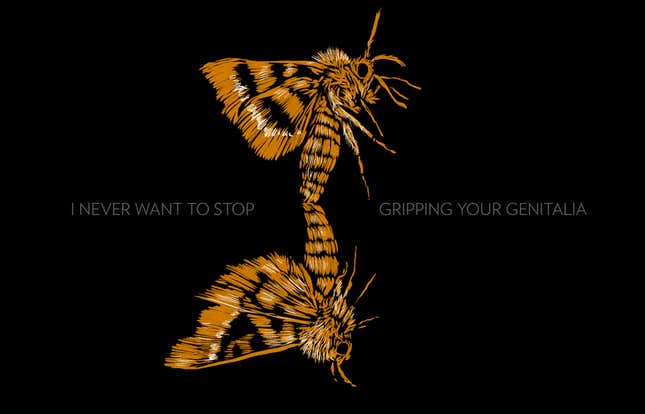They Don't Eat, They Love Orgies: Meet the World's Most Romantic Moth
Latest

They arrive at sundown, as if by standing invitation. The moths come to the same woodland clearing each night in a flapping crowd, and then begins the frenzy of flirting and mating. With their dance fights, orgies, homoerotic behavior and even the occasional “aerial strike,” the gold swift moth may have the most unpredictable sex life of any insect—which is to say, the most human-like.
No one knows the erotic habits of Phymatopus hecta better than John Turner. An emeritus biology professor at the University of Leeds in the United Kingdom, he’s studied insect evolution for more than five decades. But he stumbled into the gold swift’s world during his off-hours.
Turner has a small vacation cottage in the Scottish Highlands. One summer evening there in 2008, while he was scrubbing the dishes, he happened to look out the window and see a gold swift orgy in full swing.
“I’d known about this behavior all my life,” Turner says, but until now he’d only gotten brief glimpses.
Most moths do their wooing in the style of The Bachelor. The females perch somewhere, give off pheromones, and wait for a male to choose them. Gold swifts flip this script: males gather and display themselves for the females. You could say it’s more like The Bachelorette; bologists, though, call it a “lek.” Males of some bird, bat, antelope, wasp, and fish species gather to show off in the same way, but it’s very unusual in moths.
Although scientists had known about gold swift lekking for about a century, no one had studied it in detail. “Maybe because it occurred in the twilight, in odd corners of woods, Turner says, “and hardly anyone had taken the trouble to go back and look twice.” Now the professor had an opportunity right outside his window to learn secrets no other human knew.
Turner spent his next seven years of vacations following the moths. He discovered a sexual repertoire that was endlessly surprising. “Every night they seemed to think up something new,” he says.
The lek is only the beginning. While male moths work hard to lure females, females can also display for males. This kind of mutual attraction is nearly unheard of in moths. Both sexes may choose to perch and wait for a mate, or flirt in midair, performing dizzying solo dances or duets. They fan pheromones at each other to tempt with scent, but they also flaunt their looks.
Mixing and matching so many different tricks “makes their courtship behavior very complicated,” Turner says. His paper on the subject reads like a Kama Sutra for fuzzy winged insects.
-

-

-

-

-

-

-

-

-

-

-

-

-

-

-

-

-

-

-

-

-

-

-

-

-

-

-

-

-

-

-

-

-

-

-

-

-

-

-

-








































